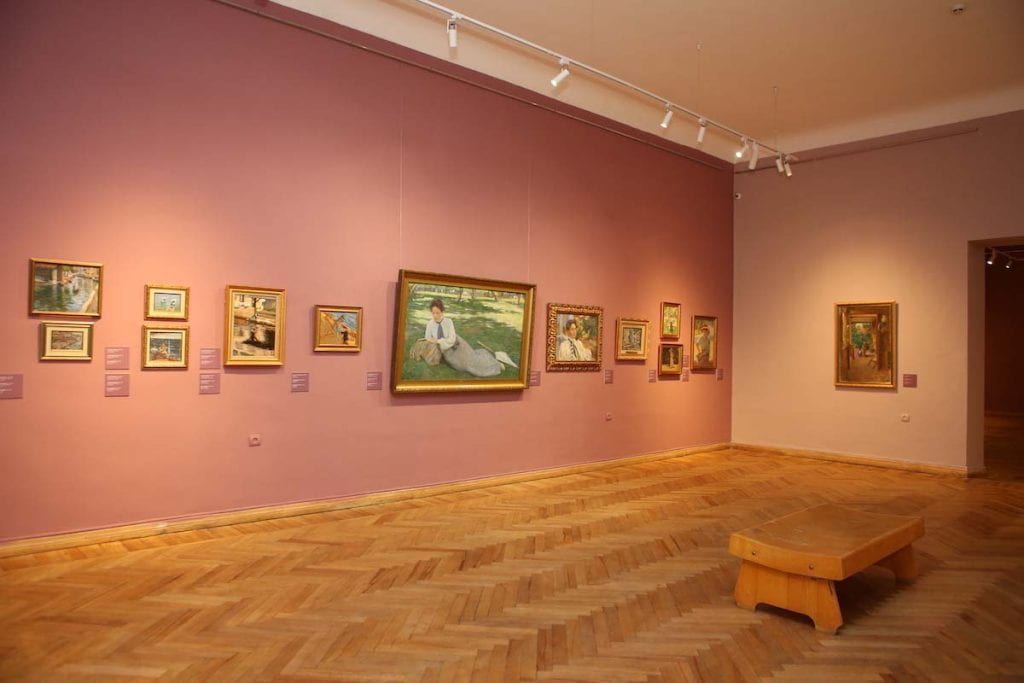Ex. 1
a. Complete the words.
1. ring — մատանի
2. leggings — լեգինգներ
3. trousers — տաբատ
4. shirt — վերնաշապիկ
5. cap — կեպի
6. tracksuit — սպորտային համազգեստ
7. trainers — սպորտային կոշիկ
8. belt — գոտի
9. coat — վերարկու
10. dress — զգեստ
11. tie — փողկապ
12. shorts — շորտեր
b. Match descriptions 1-10 to a-j.
1. They keep your hands warm — e. gloves
2. This is like a shirt, but for women — a. blouse
3. They keep your feet warm — i. socks
4. They keep your neck warm — h. scarf
5. You wear this on your head — f. hat
6. You wear these on your ears — c. earrings
7. People often wear this to a job interview. — b. suit
8. Your wear this when you go to bed. — g. pyjamas
9. You wear this under your trousers and top. — j. underwear
10. People wear these shoes to the beach. — d. flip-flops
c. Look at the photo, a remake of van Gogh’s painting The bedroom. Complete the sentences with a preposition from the list.
1. There’s a painting of a man on the left of the painting of the woman.
2. There are some clothes behind the bed.
3. There’s a chair between the bed and the table.
4. There’s a small cup in front of the two jugs on the table.
5. The two pillows on the bed are next to each other.
6. There’s a mirror above the table.
7. The chair by the bed is under the window.
LISTENING 4
Johannes Vermeer was a seventeenth century painter, from the city of Delft, in Holland. He mainly painted the people and things he saw around him: the rooms in his house, the people lived or worked there — usually women — and the the things they did every day. For example, in his work you will see women who are playing the music, reading or writing letters or working in the kitchen. Vermeer was especially good at painting light coming into a room through the windows. Partly for this reason, people often describe his as being like photography or film — his paintings can seem very «real». This painting, The Milkmaid, is one of the thes very «photographic» images. The woman, a maid or a servant, is pouring milk into a bowl. Perhaps she’s making a bread and milk pudding, because there are pieces of broken bread on the table. Nobody knows if the woman he painted was a real servant or a model. However, most people think Vermeer usually painted his wife, his daughter and his servant, not models. A famous book and film called Girl with a Pearl Earring, inspired by one of his best-known paintings, is an Imaginary story about Vermeer and his relationship with his young servant. People admired Vermeer’s paintings a lot in his lifetime, but he was never rich. There are two reasons for this.
First, because he painted very slowly. Today, there are only thirty four paintings which we can be sure are by him. Second, because he used very expensive paints. The blue paint he used for the milkmaid’s apron was made of lapis lazuli, which was a very expensive stone. People loved this painting from the very beginning, and although it is very small — only forty-six by forty-one centimetres — twenty years after Vermeer died, somebody bought the painting for the hundred seventy five Dutch guilders. That was an enormous amount of money for the time.
































